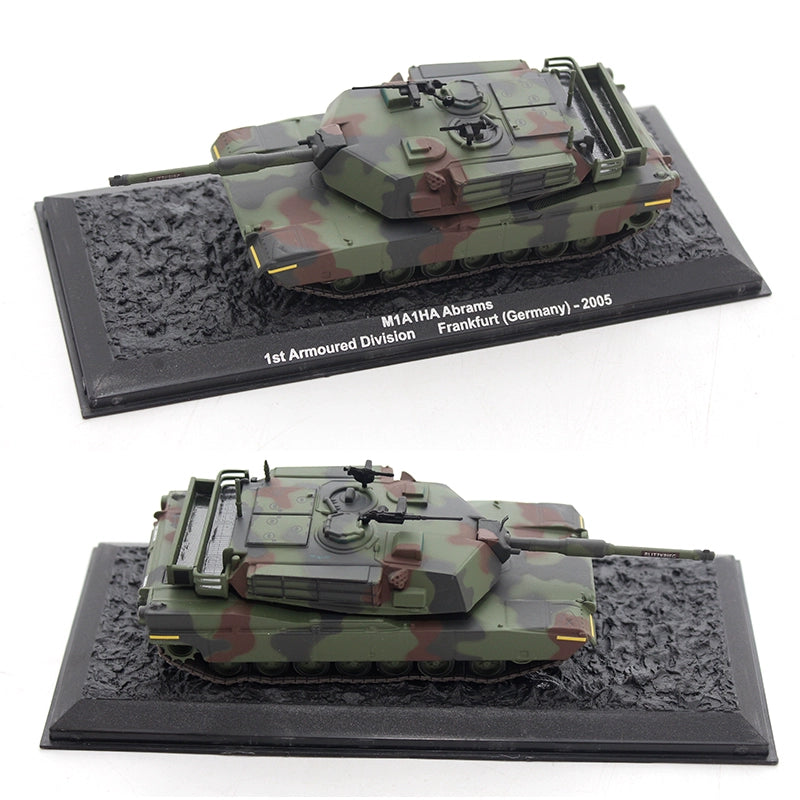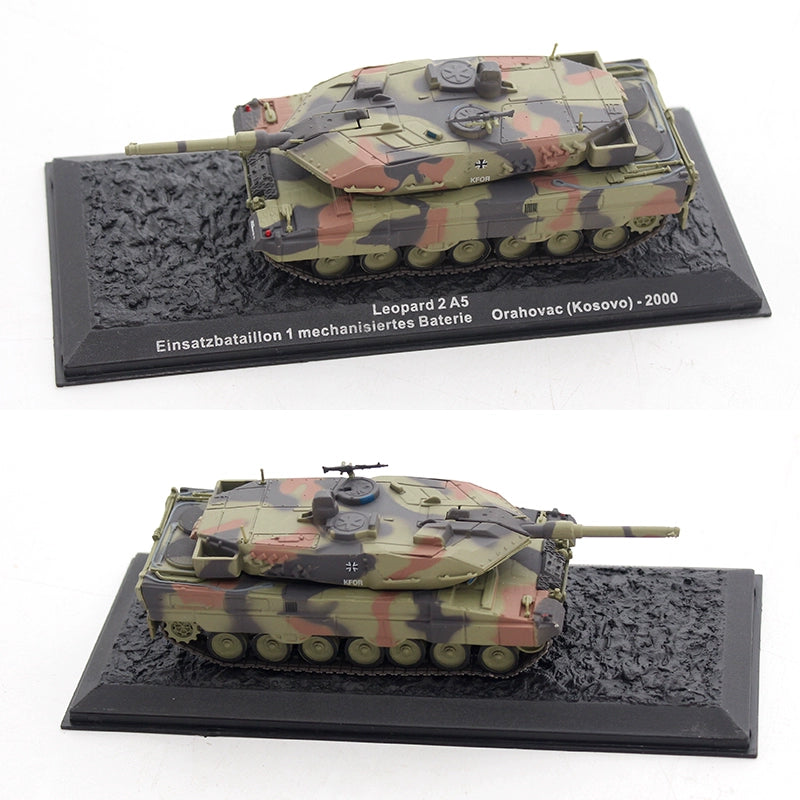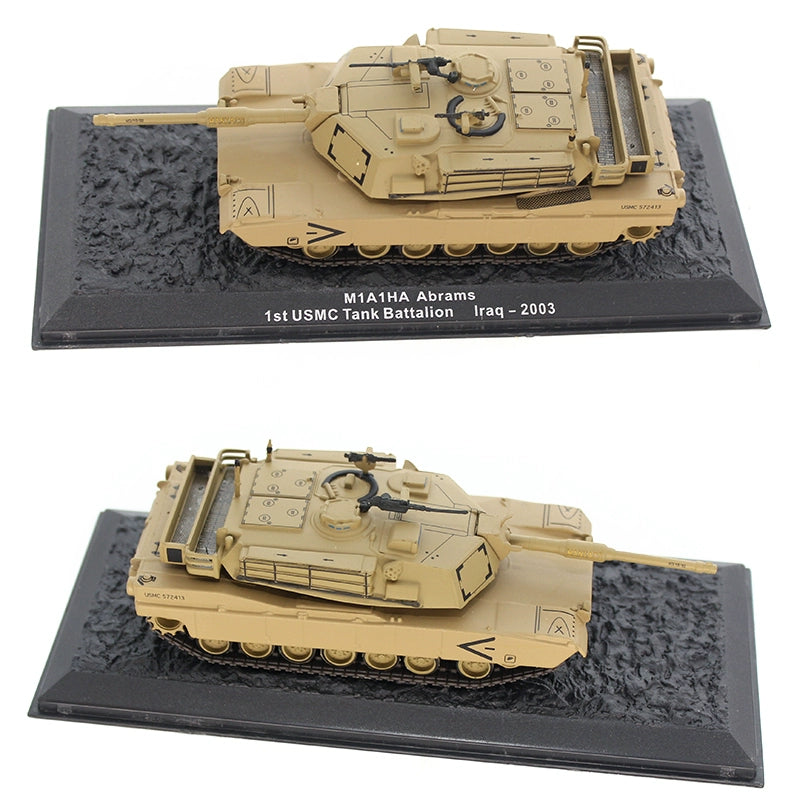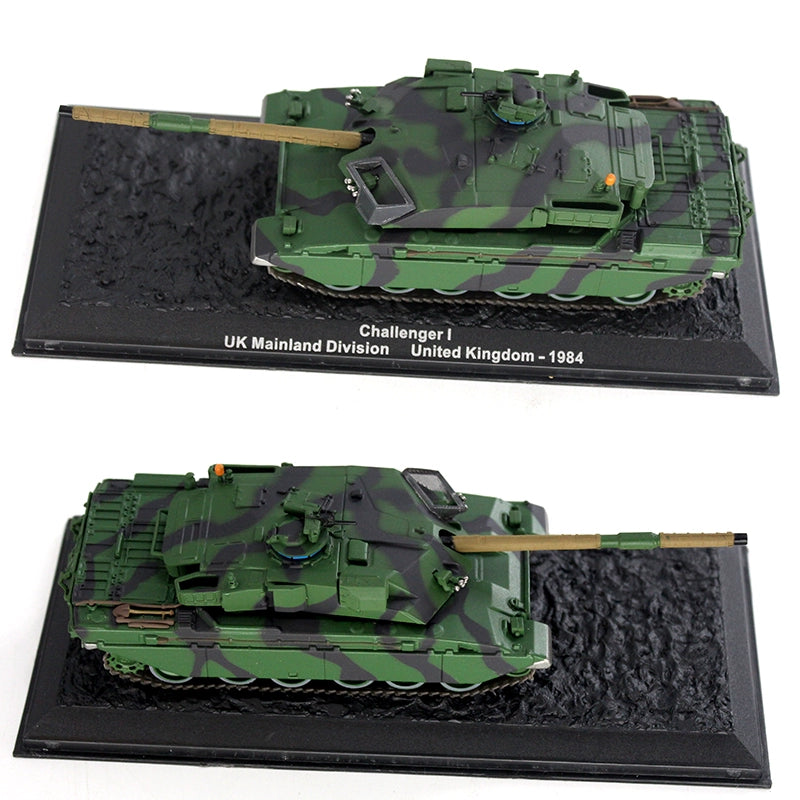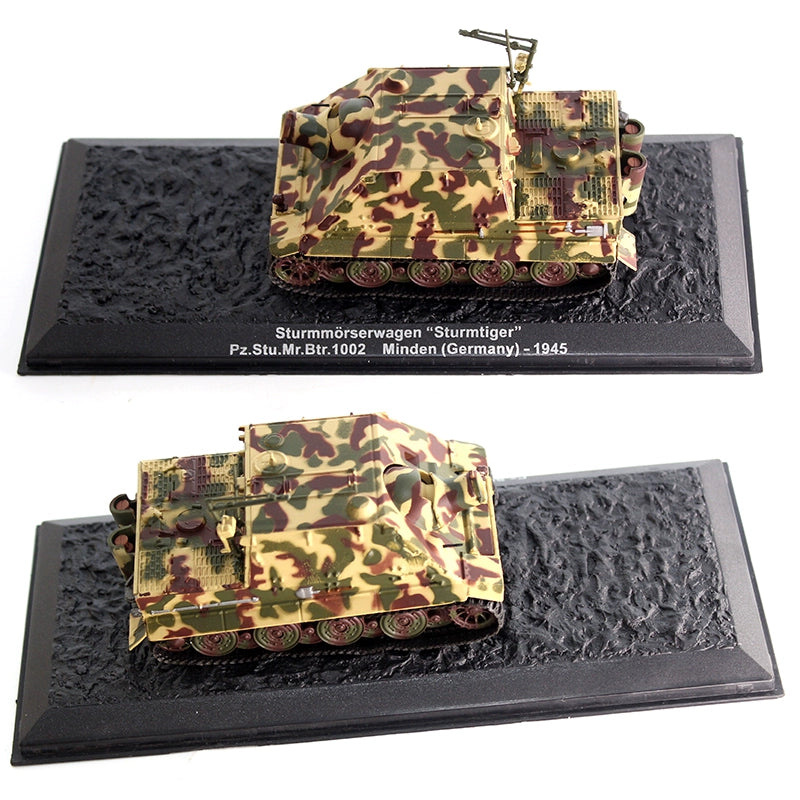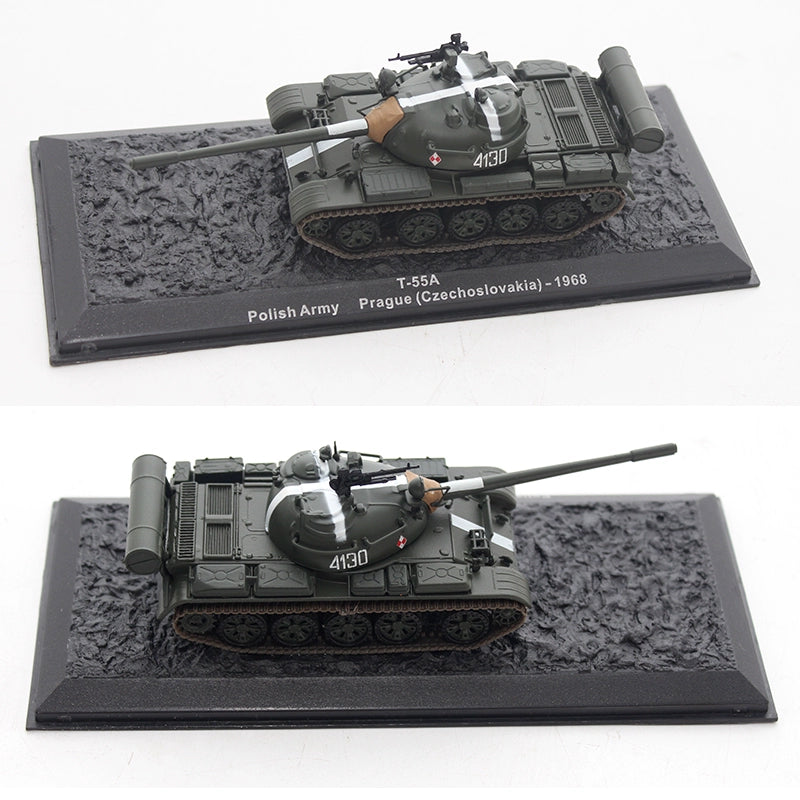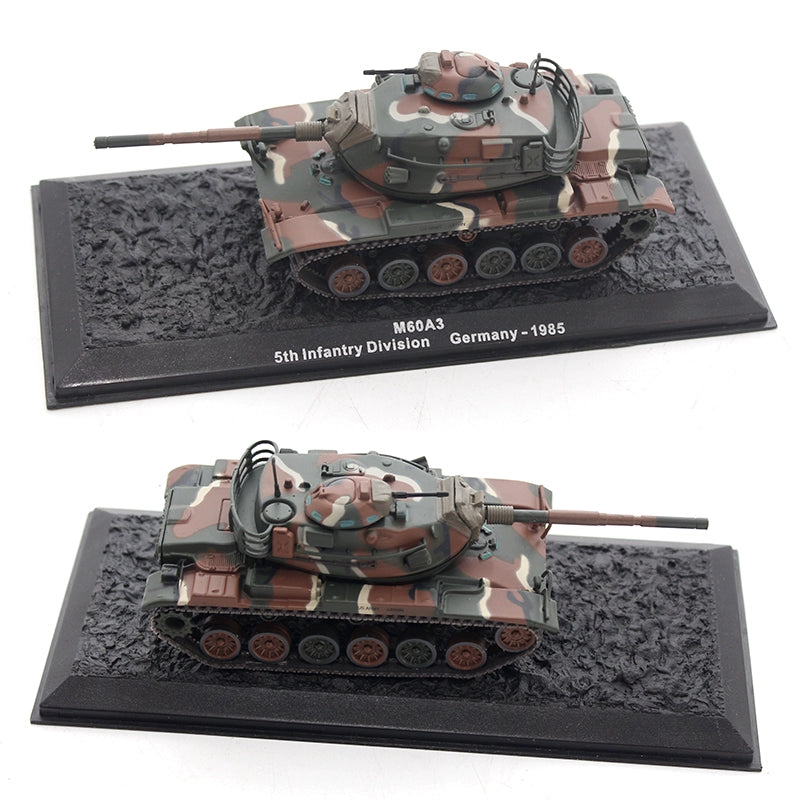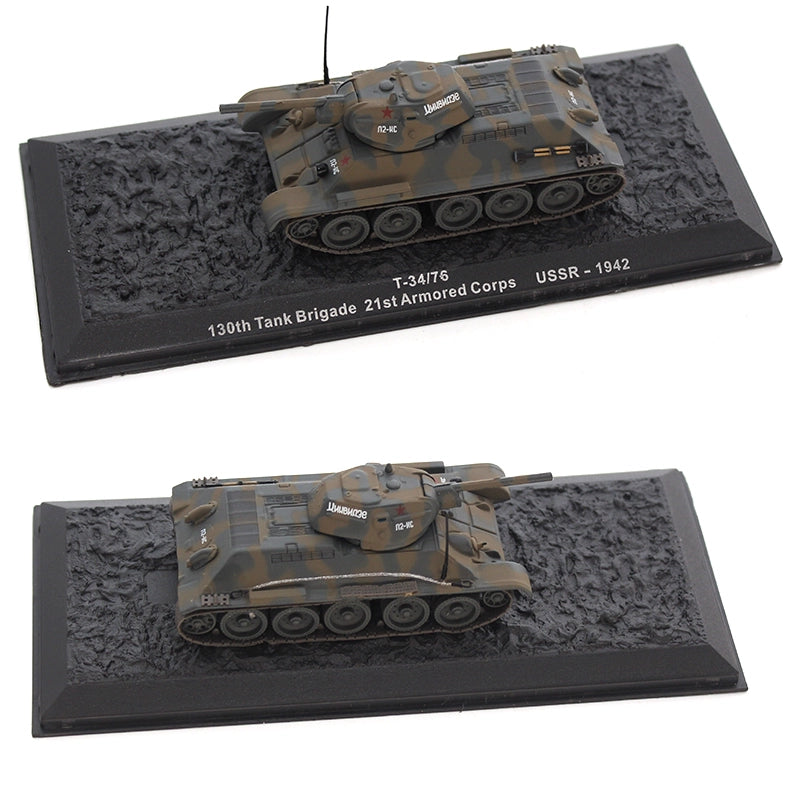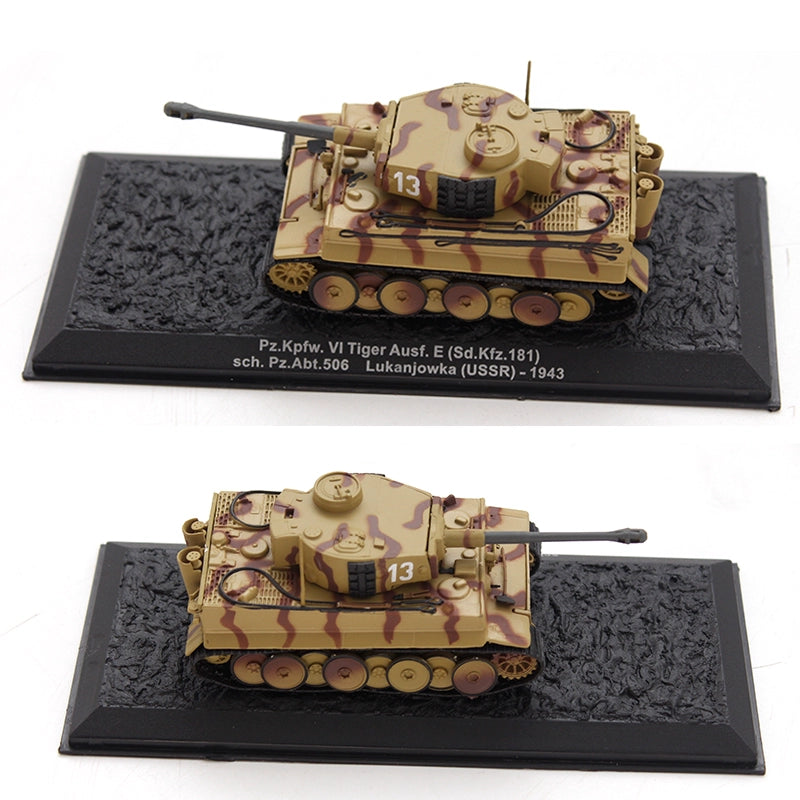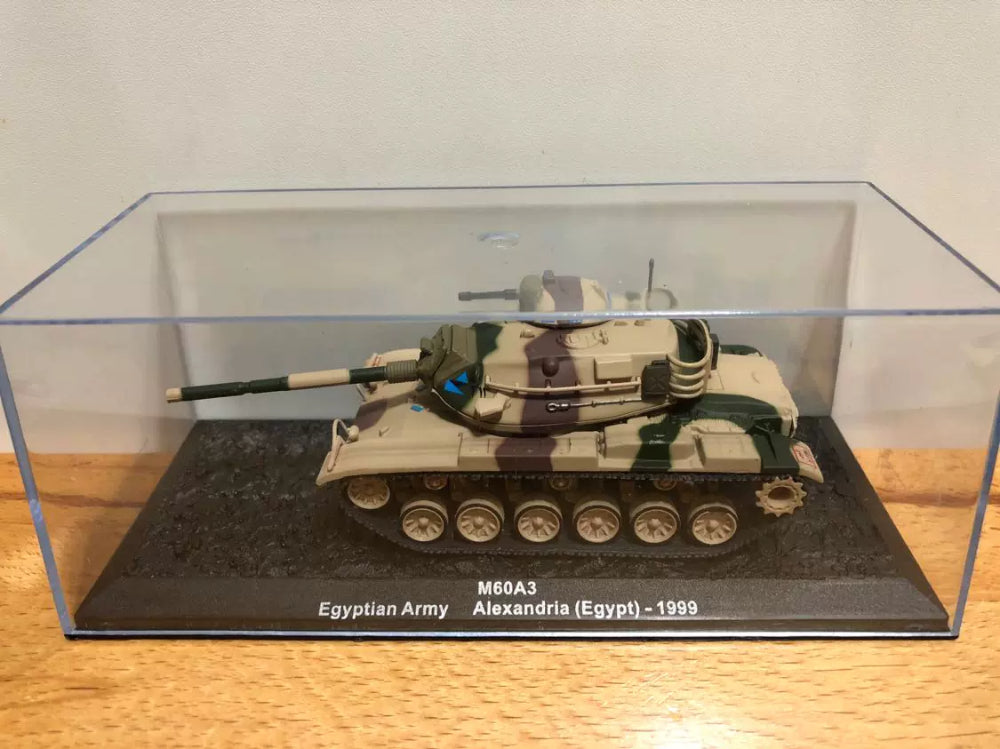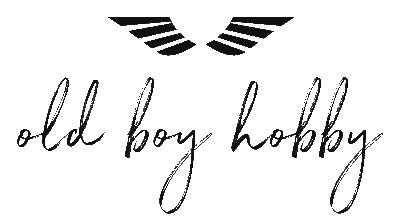old boy hobby
1/72 Scale Tank Diecast Models M1 Abrams M48 Patton M60 Tiger I Leopard 2 Sturmtiger Nashorn T-34 T-54 T-55 Challenger 1 C1 Ariete
1/72 Scale Tank Diecast Models M1 Abrams M48 Patton M60 Tiger I Leopard 2 Sturmtiger Nashorn T-34 T-54 T-55 Challenger 1 C1 Ariete
Couldn't load pickup availability
- diecast and pre-painted, ready to display
- material: metal & plastic
- scale: 1/72
Sturmtiger (German for 'Assault Tiger') was a World War II German assault gun built on the Tiger I chassis and armed with a 380mm rocket-propelled mortar. The official German designation was Sturmmörserwagen 606/4 mit 38 cm RW 61. Its primary task was to provide heavy fire support for infantry units fighting in urban areas. The few vehicles produced fought in the Warsaw Uprising, the Battle of the Bulge and the Battle of the Reichswald. The fighting vehicle was known by various informal names, among which the Sturmtiger became the most popular.
Nashorn (German: [ˈnaːsˌhɔɐ̯n], German for "rhinoceros"), initially known as Hornisse (German "hornet"), was a German Panzerjäger ("tank hunter") of World War II. It was developed as an interim solution in 1942 by equipping a light turretless chassis based on the Panzer III and Panzer IV tanks with the 8.8 cm Pak 43 anti-tank gun. Though only lightly armoured and displaying a high profile, it could penetrate the front armour of any Allied tank at long range, and its relatively low cost and superior mobility to heavier vehicles ensured it remained in production until the war's end.
The M1 Abrams (/ˈeɪbrəmz/) is a third-generation American main battle tank designed by Chrysler Defense (now General Dynamics Land Systems) and named for General Creighton Abrams. Conceived for modern armored ground warfare, it is one of the heaviest tanks in service at nearly 73.6 short tons (66.8 metric tons). It introduced several modern technologies to United States armored forces, including a multifuel turbine engine, sophisticated Chobham composite armor, a computer fire control system, separate ammunition storage in a blowout compartment, and NBC protection for crew safety. Initial models of the M1 were armed with a 105 mm M68 gun, while later variants feature a license-produced Rheinmetall 120 mm L/44 designated M256.
The M1 Abrams was developed from the failed joint American-West German MBT-70 project that intended to replace the obsolete M60 tank. There are three main operational Abrams versions: the M1, M1A1, and M1A2, with each new iteration seeing improvements in armament, protection, and electronics.
The Abrams was to be replaced in U.S. Army service by the XM1202 Mounted Combat System, but because that project was canceled, the Army has opted to continue maintaining and operating the M1 series for the foreseeable future by upgrading optics, armor, and firepower.
The M1 Abrams entered service in 1980 and serves as the main battle tank of the United States Army and formerly of the United States Marine Corps (USMC) until the decommissioning of all USMC tank battalions in 2021. The export modification is used by the armed forces of Egypt, Kuwait, Saudi Arabia, Australia, Poland and Iraq. The Abrams was first used in combat by the U.S. in the Gulf War. It was later deployed by the U.S. in the War in Afghanistan and the Iraq War, as well as by Iraq in the war against the Islamic State, Saudi Arabia in the Yemeni Civil War, and Ukraine in the Russian invasion of Ukraine.
The M48 Patton is an American first-generation main battle tank (MBT) introduced in February 1952, being designated as the 90mm Gun Tank: M48. It was designed as a replacement for the M26 Pershing, M4 Sherman, M46 and M47 Patton tanks, and was the main battle tank of the U.S. Army and U.S. Marine Corps in the Vietnam War. Nearly 12,000 M48s were built, mainly by Chrysler and American Locomotive Company, from 1952 to 1961. The M48 Patton was the first U.S. medium gun tank with a four-man crew, featuring a centerline driver's compartment and no bow machine gunner. As with nearly all new armored vehicles it had a wide variety of suspension systems, cupola styles, power packs, fenders and other details among individual tanks.
The early designs, up to the M48A2C, were powered by a gasoline engine. The M48A3 and A5 versions used a diesel engine, however, gasoline engine versions were still in use in the US Army National Guard through 1968 and through 1975 by many West German Army units. Numerous examples of the M48 saw combat use in various Arab–Israeli conflicts and the Vietnam War. Beginning in 1959, most American M48A1s and A2s were upgraded to the M48A3 model.
The M48 Patton-series saw widespread service with the United States and NATO until it was superseded by the M60 tank. It was widely exported. The tank's hull also developed a wide variety of experimental, utility and support vehicles such as armored recovery vehicles and bridge layers. Some M48A5 models served into the mid-1980s with US Army National Guard units, and M48A3s were used as targets for weapons and radar testing into the mid-1990s.
Many M48s remain in service in countries other than the US. Most of these have been modified and their firepower, mobility and protection upgraded to increase their combat effectiveness on the modern battlefield. As of 2015, Turkey is the largest operator with over 750 units in service, Taiwan is second with approximately 500 upgraded variants, and Greece is third with 390 in service.
The M60 is an American second-generation main battle tank (MBT). It was officially standardized as the Tank, Combat, Full Tracked: 105-mm Gun, M60 in March 1959. Although developed from the M48 Patton, the M60 tank series was never officially christened as a Patton tank. It has been called a "product-improved descendant" of the Patton tank's design. The design similarities are evident comparing the original version of the M60 and the M48A2. The United States fully committed to the MBT doctrine in 1963, when the Marine Corps retired the last (M103) heavy tank battalion. The M60 tank series became America's primary main battle tank during the Cold War, reaching a production total of 15,000 M60s. Hull production ended in 1983, but 5,400 older models were converted to the M60A3 variant ending in 1990.
The M60 reached operational capability upon fielding to US Army European units beginning in December 1960. The first combat use of the M60 was by Israel during the 1973 Yom Kippur War, where it saw service under the "Magach 6" designation, performing well in combat against comparable tanks such as the T-62. In 1982, the Israelis again used the M60 during the 1982 Lebanon War, equipped with upgrades such as explosive reactive armor to defend against guided missiles that proved very effective at destroying tanks. The M60 also saw use in 1983 during Operation Urgent Fury, supporting US Marines in an amphibious assault on Grenada. M60s delivered to Iran also served in the Iran–Iraq War.
The United States' largest deployment of M60s was in the 1991 Gulf War, where the US Marines equipped with M60A1s effectively defeated Iraqi armored forces, including T-72 tanks. The United States retired the M60 from front-line combat after Operation Desert Storm, with the last tanks being retired from National Guard service in 1997. M60-series vehicles continue in front-line service with a number of countries' militaries, though most of these have been highly modified and had their firepower, mobility, and protection upgraded to increase their combat effectiveness on the modern battlefield.
The M60 has undergone many updates over its service life. The interior layout, based on the design of the M48, provided ample room for updates and improvements, extending the vehicle's service life for over four decades. It was widely used by the US and its Cold War allies, especially those in NATO, and remains in service throughout the world, despite having been superseded by the M1 Abrams in the US military. The tank's hull was the basis for a wide variety of prototype, utility, and support vehicles such as armored recovery vehicles, bridge layers and combat engineering vehicles. As of 2015, Egypt is the largest operator with 1,716 upgraded M60A3s, Turkey is second with 866 upgraded units in service, and Saudi Arabia is third with over 650 units.
The Tiger I (German: [ˈtiːɡɐ]) was a German heavy tank of World War II that began operational duty in 1942 in Africa and in the Soviet Union, usually in independent heavy tank battalions. It gave the German Army its first armoured fighting vehicle that mounted the 8.8 cm KwK 36 gun (derived from the 8.8 cm Flak 36, the famous "eighty-eight" feared by Allied troops). 1,347 were built between August 1942 and August 1944. After August 1944, production of the Tiger I was phased out in favour of the Tiger II.
While the Tiger I has been called an outstanding design for its time, it has also been called overengineered,[14] using expensive materials and labour-intensive production methods. In the early period, the Tiger was prone to certain types of track failures and breakdowns. It was expensive to maintain, but generally mechanically reliable. It was difficult to transport and vulnerable to immobilisation when mud, ice, and snow froze between its overlapping and interleaved Schachtellaufwerk-pattern road wheels, often jamming them solid.
The tank was given its nickname "Tiger" by Ferdinand Porsche, and the Roman numeral was added after the Tiger II entered production. It was classified with ordnance inventory designation Sd.Kfz. 182. The tank was later re-designated as PzKpfw VI Ausf. E in March 1943, with ordnance inventory designation Sd.Kfz. 181.
Today, only nine Tiger I tanks survive in museums and private collections worldwide. As of 2021, Tiger 131 (captured during the North African campaign) at the UK's Tank Museum is the only example restored to running order.
The Leopard 2 is a third generation German main battle tank (MBT). Developed by Krauss-Maffei in the 1970s, the tank entered service in 1979 and replaced the earlier Leopard 1 as the main battle tank of the West German army. Various iterations of the Leopard 2 continue to be operated by the armed forces of Germany, as well as 13 other European countries, and several non-European countries, including Canada, Chile, Indonesia, and Singapore. Some operating countries have licensed the Leopard 2 design for local production and domestic development.
There are two main development tranches of the Leopard 2. The first encompasses tanks produced up to the Leopard 2A4 standard and are characterised by their vertically faced turret armour. The second tranche, from Leopard 2A5 onwards, has an angled, arrow-shaped, turret appliqué armour, together with other improvements. The main armament of all Leopard 2 tanks is a smoothbore 120 mm cannon made by Rheinmetall. This is operated with a digital fire control system, laser rangefinder, and advanced night vision and sighting equipment. The tank is powered by a V12 twin-turbo diesel engine made by MTU Friedrichshafen.
In the 1990s, the Leopard 2 was used by the German Army on peacekeeping operations in Kosovo. In the 2000s, Dutch, Danish and Canadian forces deployed their Leopard 2 tanks in the War in Afghanistan as part of their contribution to the International Security Assistance Force. In the 2010s, Turkish Leopard 2 tanks saw action in Syria. In 2023–24, Ukrainian Leopard 2 tanks are seeing action in the Russo-Ukrainian war.
The T-34 is a Soviet medium tank from World War II. When introduced, its 76.2 mm (3 in) tank gun was more powerful than many of its contemporaries, and its 60-degree sloped armour provided good protection against anti-tank weapons. The T-34 had a profound effect on the conflict on the Eastern Front, and had a long-lasting impact on tank design. The tank was praised by multiple German generals when encountered during Operation Barbarossa, although its armour and armament were surpassed later in the war. Its main strength was its cost and production time, meaning that German panzer forces would often fight against Soviet tank forces several times their size. The T-34 is also a critical part of the mechanized divisions that form the backbone of the Deep Battle Strategy.
The T-34 was the mainstay of the Soviet Red Army armoured forces throughout the war. Its general specifications remained nearly unchanged until early 1944, when it received a firepower upgrade with the introduction of the greatly improved T-34-85 variant. Its production method was continuously refined and rationalized to meet the needs of the Eastern Front, making the T-34 quicker and cheaper to produce. The Soviets ultimately built over 80,000 T-34s of all variants, allowing steadily greater numbers to be fielded despite the loss of tens of thousands in combat against the German Wehrmacht.
Replacing many light and medium tanks in Red Army service, it was the most-produced tank of the war, as well as the second most-produced tank of all time (after its successor, the T-54/T-55 series). With 44,900 lost during the war, it also suffered the most tank losses ever. Its development led directly to the T-44, then the T-54 and T-55 series of tanks, which in turn evolved into the later T-62, that form the armoured core of many modern armies. T-34 variants were widely exported after World War II, and as recently as 2023 more than 80 were still in service.
The T-54 and T-55 tanks are a series of Soviet main battle tanks introduced in the years following the Second World War. The first T-54 prototype was completed at Nizhny Tagil by the end of 1945. From the late 1950s, the T-54 eventually became the main tank for armoured units of the Soviet Army, armies of the Warsaw Pact countries, and many others. T-54s and T-55s have been involved in many of the world's armed conflicts since their introduction in the second half of the 20th century.
The T-54/55 series is the most-produced tank in history. Estimated production numbers for the series range from 96,500 to 100,000. They were replaced by the T-62, T-64, T-72, T-80 and T-90 tanks in the Soviet and Russian armies, but remain in use by up to 50 other armies worldwide, some having received sophisticated retrofitting. The Chinese version of the T-54A is the Type 59.
During the Cold War, Soviet tanks never directly faced their NATO adversaries in combat in Europe. However, the T-54/55's first appearance in the West around the period of the 1950s (then the beginning of the Cold War) spurred the United Kingdom to develop a new tank gun, the Royal Ordnance L7, and the United States to develop the M60 tank.
The FV4030/4 Challenger 1 is a British main battle tank (MBT) used by the British Army from 1983 to 2001, when it was superseded by the Challenger 2. The majority of the Challenger 1 fleet was subsequently sold to Jordan where it remained in service with the Royal Jordanian Army until withdrawals were announced in 2018. Known locally as Al-Hussein, these vehicles received various Jordanian modifications before being replaced by French-made Leclerc tanks from the UAE and ex-Italian B1 Centauro 8x8 wheeled tank destroyers. The Jordanian Challenger 1 fleet had been retired by January 2023.
The C1 Ariete (English: battering ram, ram) is a 3rd generation main battle tank of the Italian Army, developed by Consorzio Iveco Oto Melara (CIO), a consortium formed by IVECO and OTO Melara. The chassis and engine were produced by Iveco, while the turret and fire-control system were supplied by OTO Melara. The vehicle carries the latest optical and digital-imaging and fire-control systems, enabling it to fight day and night and to fire on the move. Six prototypes were developed by 1988, which were subject to intensive testing. The following year the vehicles travelled a combined 16,000 km. Deliveries were first planned for 1993, and took place in 1994 due to delays. Final delivery occurred 7 years later in August 2002.
--copied from Wikipedia
Share
